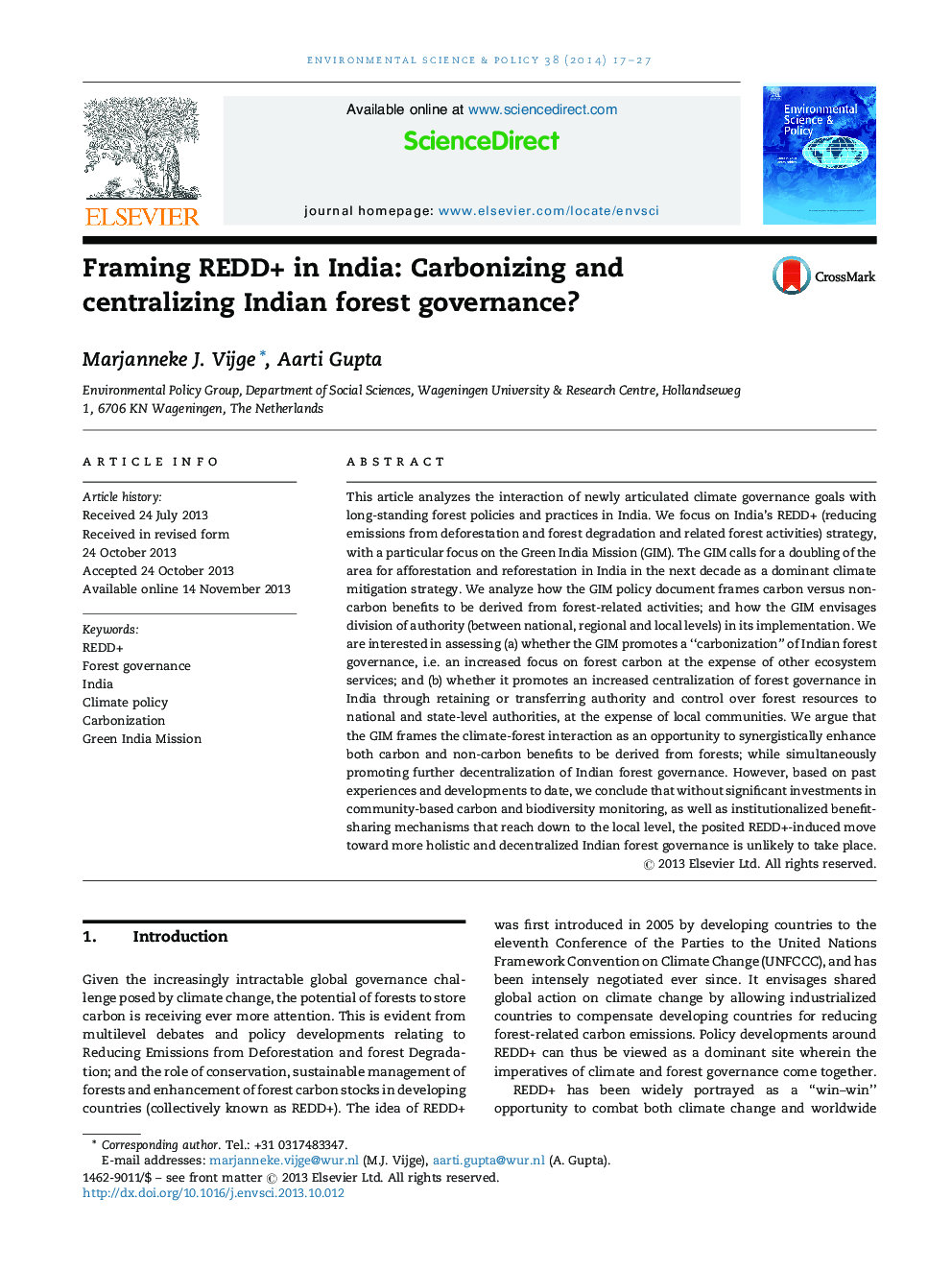| Article ID | Journal | Published Year | Pages | File Type |
|---|---|---|---|---|
| 7467912 | Environmental Science & Policy | 2014 | 11 Pages |
Abstract
This article analyzes the interaction of newly articulated climate governance goals with long-standing forest policies and practices in India. We focus on India's REDD+ (reducing emissions from deforestation and forest degradation and related forest activities) strategy, with a particular focus on the Green India Mission (GIM). The GIM calls for a doubling of the area for afforestation and reforestation in India in the next decade as a dominant climate mitigation strategy. We analyze how the GIM policy document frames carbon versus non-carbon benefits to be derived from forest-related activities; and how the GIM envisages division of authority (between national, regional and local levels) in its implementation. We are interested in assessing (a) whether the GIM promotes a “carbonization” of Indian forest governance, i.e. an increased focus on forest carbon at the expense of other ecosystem services; and (b) whether it promotes an increased centralization of forest governance in India through retaining or transferring authority and control over forest resources to national and state-level authorities, at the expense of local communities. We argue that the GIM frames the climate-forest interaction as an opportunity to synergistically enhance both carbon and non-carbon benefits to be derived from forests; while simultaneously promoting further decentralization of Indian forest governance. However, based on past experiences and developments to date, we conclude that without significant investments in community-based carbon and biodiversity monitoring, as well as institutionalized benefit-sharing mechanisms that reach down to the local level, the posited REDD+-induced move toward more holistic and decentralized Indian forest governance is unlikely to take place.
Related Topics
Physical Sciences and Engineering
Energy
Renewable Energy, Sustainability and the Environment
Authors
Marjanneke J. Vijge, Aarti Gupta,
